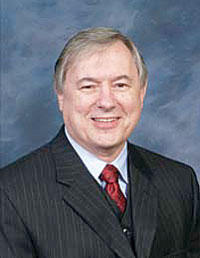
News
Thermostat Recycling Corp. Refutes ‘Per Capita’ Argument for Mercury-Containing Thermostat Collections
By Tom Murray
Since its inception more than two decades ago, the nonprofit Thermostat Recycling Corp. (TRC) – which was founded by the HVACR industry to recover and recycle mercury-switch thermostats – has endured debate over the appropriate standard for measuring success. Is there a metric that constitutes a sound basis for evaluating TRC’s performance in a state, and for making comparisons between states?

Unfortunately, the standard often held up as the solution to this dilemma – the number of thermostats collected per capita in a given time period – is perhaps the least defensible scientifically. While it may have the advantage of being easy to calculate and use for comparisons, it’s a misleading barometer of whether a program like TRC is reaching its potential. The problem is that states differ – often dramatically – on how to count thermostats that remain in use but require their removal and safe recycling decades after their installation.
Certain states – some voluntarily, others because they have a mandate to characterize performance in some manner – regularly compute the number of thermostats collected per capita in a given year and use the resulting calculation to make state-by-state comparisons. According to TRC, however, this approach does a poor job of characterizing how TRC performs in one state versus another.
“The issue is that no reasonably accurate method exists for estimating how many mercury-switch thermostats remain in place,” said Danielle Myers, TRC’s operations & compliance manager, “which means we can’t calculate ‘recycling rates’ with any precision.” However, the per capita metric, which some states emphasize, is not a meaningful alternative, and we recommend strongly against relying on it.”
Simply put, the per capita approach involves computing the number of thermostats collected in a given year per 10,000 (or 100,000) residents. Comparing this calculation state to state, some argue, gives a clear picture of where TRC operates most – and least – effectively. TRC thus becomes a magnet for criticism in states with a relatively low per capita figure, while those with high figures are held up as models for successful operation.
The basic problem with this approach is that it incorrectly assumes that states are homogeneous, and that every resident in a state is equally likely to own or use a mercury thermostat regardless of age, profession, location and socioeconomic status. Yet homeowner sales of mercury thermostats varied widely among states for decades.
Per capita figures fail to account for numerous factors that affect this variability, according to Myers. Weather patterns, climate, differences in heating and cooling equipment, median household income, age of the housing stock, local acceptance for programmable and smart thermostats, involvement of utility programs in the recycling process – these considerations, among others, will have impacted the demand for and prevalence of mercury thermostats in a state over time.
TRC continually evaluates its performance in all states in which it operates, measured against the conditions that existed at the time the program began operating, with an eye on trends as a gauge for future progress.
“It would be useful to have a more objective standard that reflects with greater accuracy the characteristics that shape expectations in a state, rather than a ‘convenient’ number lacking a solid foundation,” Myers said.
TRC has researched an approach that draws on the predictive capacity of factors such as the number of household units in a state (factoring in climate zone effects), the number of recycling locations, and real household income. It may not prove to be an ideal solution, but so far, these factors have done a better job of predicting the variance in thermostat collection rates across states than per capita or population figures.
In 2018, TRC recycled approximately 141,000 units, continuing its descent from the program’s peak year of 2014. This decline is to be expected and will no doubt become steeper, given that mercury-switch thermostats haven’t been sold in the U.S. since the early 2000s and were being displaced well before that by advanced, nonmercury alternatives.
“TRC’s message about the importance of recycling these devices to prevent the release of mercury, a recognized health hazard, is as important as ever,” Myers said. “We remain committed to working with our program partners to recover as many as possible.
“Meanwhile, focusing attention on a misleading, unscientific performance measure to influence policy decisions will result in little if any benefit.”
About the Author
Tom Murray is a pollution prevention and sustainability expert and Director of Utility Relationships for the Thermostat Recycling Corporation (TRC). In this capacity, Tom supports TRC’s efforts to facilitate and manage the collection and proper disposal of mercury-containing thermostats.














